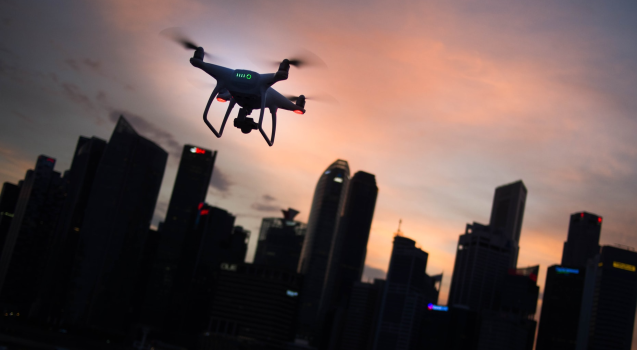K
Kathleen Martin
Guest
As customer expectations regarding shipping and delivery times get higher, the performance of manned couriers starts to bottleneck. Instant gratification has become a universal trend, and ecommerce industries that can use drones to ship and deliver their goods fast have a lot to gain.
It’s no wonder then that many large companies, like Amazon, have started experimenting with drone deliveries for quite a few years.
It seems like old news by now or something like a failed school science project, but the use of drones in the logistics sector is expected to increase the revenue in e-commerce by up to 25% in the next 10 years and save retailers more than $10 million in shipping costs.
And that’s just the beginning.
WHY HAVEN’T DRONES BEEN IMPLEMENTED IN ECOMMERCE SO FAR?
One of the main reasons drone delivery has been stagnating is current legislation and safety concerns. While Amazon and a few other companies like Alphabet (Google) have received permission from the FAA to test their drone projects with actual delivery packages, there is one caveat to take into account.
Currently, the FAA rules mention that even for commercial drone use, the drone has to stay in line of sight of the operator, so until special exceptions are made for these companies, drones won’t be able to be automatically flown by preprogrammed software.
Another issue is that of privacy and safety, considering these drones will swarm over people’s houses and that adds yet another layer of complexity to the legislation problem.
And as logistical issues go, drones struggle to find more challenging addresses as easily as humans, and dropping a package at your home might end up with broken deliveries and damaged drones.
Solutions to solve these problems would be things like:
Continue reading: https://thewisemarketer.com/customer-experience/top-5-ecommerce-industries-that-will-be-completely-transformed-by-drone-technology/
It’s no wonder then that many large companies, like Amazon, have started experimenting with drone deliveries for quite a few years.
It seems like old news by now or something like a failed school science project, but the use of drones in the logistics sector is expected to increase the revenue in e-commerce by up to 25% in the next 10 years and save retailers more than $10 million in shipping costs.
And that’s just the beginning.
WHY HAVEN’T DRONES BEEN IMPLEMENTED IN ECOMMERCE SO FAR?
One of the main reasons drone delivery has been stagnating is current legislation and safety concerns. While Amazon and a few other companies like Alphabet (Google) have received permission from the FAA to test their drone projects with actual delivery packages, there is one caveat to take into account.
Currently, the FAA rules mention that even for commercial drone use, the drone has to stay in line of sight of the operator, so until special exceptions are made for these companies, drones won’t be able to be automatically flown by preprogrammed software.
Another issue is that of privacy and safety, considering these drones will swarm over people’s houses and that adds yet another layer of complexity to the legislation problem.
And as logistical issues go, drones struggle to find more challenging addresses as easily as humans, and dropping a package at your home might end up with broken deliveries and damaged drones.
Solutions to solve these problems would be things like:
- Special drop-off points. These drop off secure points would be placed around the neighborhood, close enough so most people can easily walk to them, but would solve the issue of package security and finding addresses.
- Using hexacopters for motor redundancy. A drone with more than 4 motors means that even if one is to fail, it would still be able to stay in the air and would considerably increase safety.
- AI and obstacle avoidance sensors. By making the routes adapt to aviation emergencies and automatic avoidance of obstacles, we might reach a point where the regulation would change as drone flying safety reaches its peak.
Continue reading: https://thewisemarketer.com/customer-experience/top-5-ecommerce-industries-that-will-be-completely-transformed-by-drone-technology/

